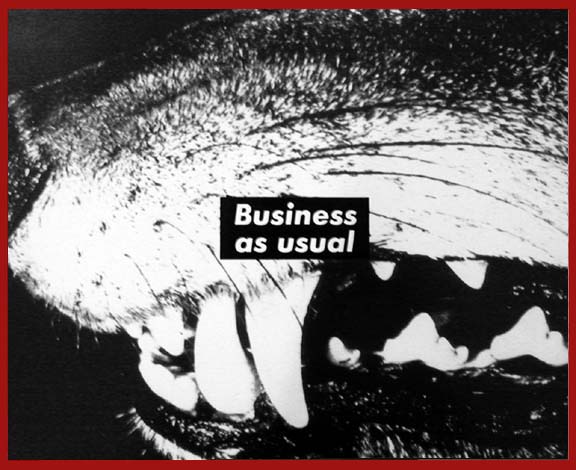
1987
Barbara Kruger desevres to be known as more than just "the artist Supreme plagarized from;" although, at the risk of sounding pretentious, I dare say there's something poetic about that whole ordeal.
But I won't dwell on it any longer. This is not about Supreme. This is about Business as Usual.
Except—it's a hard piece to explain, isn't it? It's so simple, in a way that works to its advantage. The matter-of-fact monochrome, the geometricity. This version you see here is black-and-white, but in my favorite—sadly relegated to tote bags and cardboard prints, it seems—the recrtangle is red. It splashes like blood against the greyscale, a clean, cruel incision. A patch of mutilation, like the way Zeta Reticulans dissect cattle, along lines humans draw but they can actually see.
To whom does this muzzle belong? Is this animal crying out in pain, another helpless victim of high fashion? Or is it not the wounded, but the wounder, opening its mouth to lick the blood from black lips?
Business as Usual is one of those pieces where the text or the title does half the work. The business Kruger speaks of is cruelty. It's as efficient as a clean-cut, inorganic shape. It's as instinctive as a fox's teeth in a squirrel's neck. Kruger's piece fuses these two elements with the help of a precision exclusive to machines. Business as Usual evokes the incessant march of capitalist competition, and then confronts us with our all-too-common response: we gnash our teeth, but ultimately look the other way in the interest of our own survival.
⋅•⋅⊰∙∘☽༓☾∘∙⊱⋅•⋅